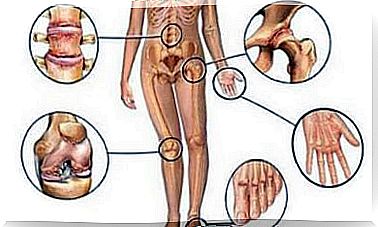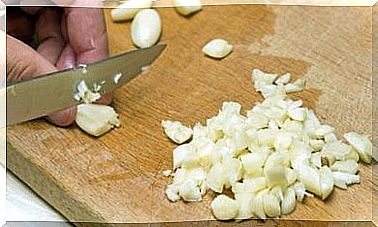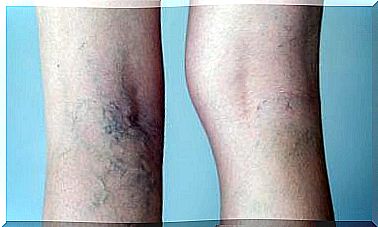Four Easy Pilates Exercises For Beginners
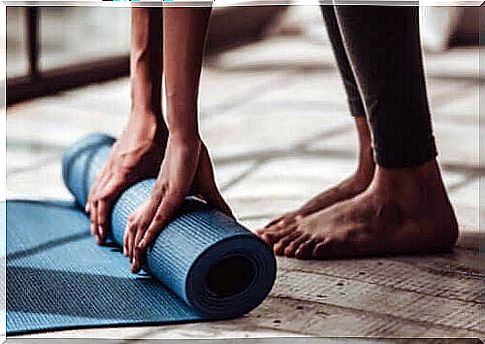
Pilates exercises for beginners focus on balance, posture, strength and flexibility. Although this is a very complete method for those who want to stay in shape, it is also very useful as a means of rehabilitation therapy.
In general, people use specially designed Pilates benches to perform these types of exercises, but you can also do them on a mat. Do you want to know more about this form of movement? In this article, we’ll show you which Pilates exercises are best for beginners.
What are the benefits of Pilates?
The Pilates method is a set of exercises that are low impact for the most part. That is why it is so popular when it comes to improving postural problems and relieving muscle soreness. In addition, as we said, it is ideal for maintaining physical and mental health.
There isn’t much scientific evidence about its effects. However, a study published in the Official Journal of the American Aging Association concluded that practicing Pilates twice a week for three months helps to increase upper and lower body strength and abdominal strength in postmenopausal women.
Pilates exercises for beginners
You don’t need any special skills and you don’t need to be in perfect shape to perform pilates exercises for beginners . It is therefore a discipline that people of all ages can benefit from (Spanish link).
If you’d like to give it a try, you’ll find the following information helpful. One of the advantages of Pilates is that you can easily perform the exercises at home. You just need willingness, concentration and a mat.
Remember that this physical activity is meant to relax your body and mind. It is therefore best to find a quiet and ventilated place to practice Pilates. So let’s get started!
1. Roll up

This is one of the most common exercises during the warm-up phase of Pilates. It targets the abdominal area, improves flexibility in your back and develops strength, mobility and strength in the spine.
What should you do?
- Lie on the floor with your arms and legs straight. Your legs should be straight and in line with your shoulders. Your arms stay together.
- Inhale as you lift your arms up, making sure to keep your back on the mat.
- As you exhale, gradually try to sit up straight, with your arms extended, as if you were trying to reach your feet. The idea is to move slowly, noticing how each rib comes off the mat.
- Once your body has reached a ‘C’ shape, start moving backwards again.
- Inhale and, as you exhale, slowly return to your original position.
- Do between 3 and 5 reps.
2. Rolling back
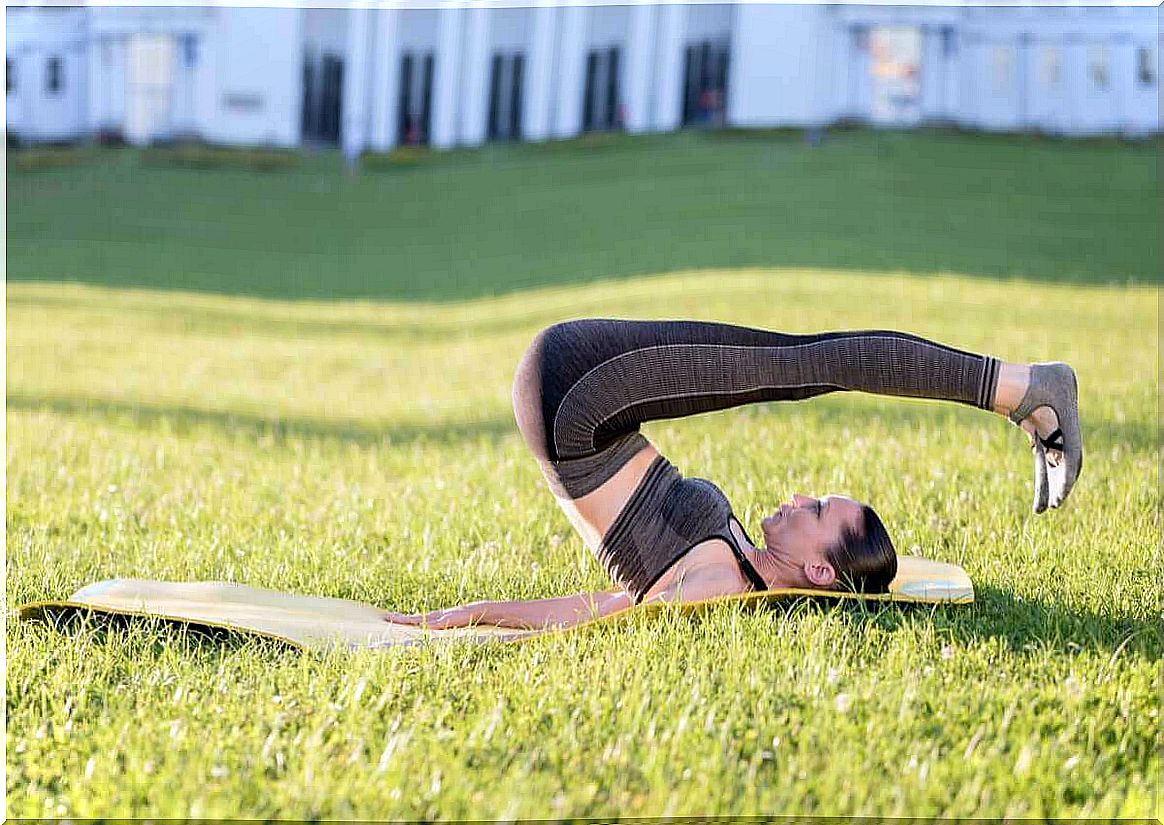
One of the best Pilates exercises for beginners is rolling back. It gets your blood flowing, moving across the mat, to strengthen the muscles in your abdomen. At the same time , it provides a pleasant massage for your vertebrae. To do the exercise correctly, you really need to focus.
What should you do?
- Sit with your back straight against the front part of your mat and keep your feet in the air.
- Then grab your ankles from the outside and open your elbows slightly.
- Keep your chin against your chest.
- In this position, as you inhale, start rolling back and forth until your entire back has touched the floor. Do this without losing your starting position.
- Now exhale and using the strength of your abs return to a sitting position.
- Continue this technique for 3 minutes.
3. Stretching the Spine

If you’re looking to get started with Pilates, spine stretching is one of the easiest Pilates exercises for beginners. It also helps to improve the blood circulation in the spine and to stimulate the balance of the trunk. It also improves the flexibility of the muscles in the back of the leg.
What should you do?
- Sit on your mat with your legs and your back straight.
- Then inhale and lengthen your spine as if you were trying to reach the sky.
- Then extend your arms forward at the level of your shoulders, parallel to the floor.
- Exhale and begin extending your arms forward until your torso is in a C shape.
- Make sure to inhale again to stretch a little further.
- Finally, exhale and slowly return to the starting position.
4. Push Up Exercises

This is one of the most common ways to train your upper body. These are the normal stretches we all know, but remember that Pilates is more than just strength. It is also about full awareness of your breathing and balance.
What should you do?
- To start, lie face down on the floor on your mat.
- Then get on your hands and knees and slowly move your arms forward.
- Remember that your back should be straight, in line with your head. At the same time, your arms should remain shoulder-width apart.
- Then perform the push-up by moving up and down slowly.
- Repeat the process 10 times. If you want to increase the resistance, you can perform the exercise with your legs straight.
Pilates Exercise Advice for Beginners
As we mentioned, Pilates is one of the best disciplines when it comes to mental and physical training (Spanish link). However, as with all exercise routines, there are certain recommendations that you should keep in mind before you begin. For example, think of:
- Listen to your body. Whether you’re training alone at home or with the help of a trainer, you need to be aware of your movements. That way you understand what problems are present in your body. This will help you focus more on your poses to relieve and prevent muscle soreness.
- Take a deep breath in and out. Breathing well does more than continuing with your exercises. It also helps you to relax your body and avoid unnecessary tension.
- Know how far to go. Remember that everyone is different. Therefore, do not compare yourself with others and do not stretch yourself too far.
Now that you know the basics of Pilates, it’s time to find a mat and test the benefits for yourself. Keep the above advice in mind and pay special attention to your posture to avoid pain and injury. When in doubt, seek advice from a Pilates trainer.





